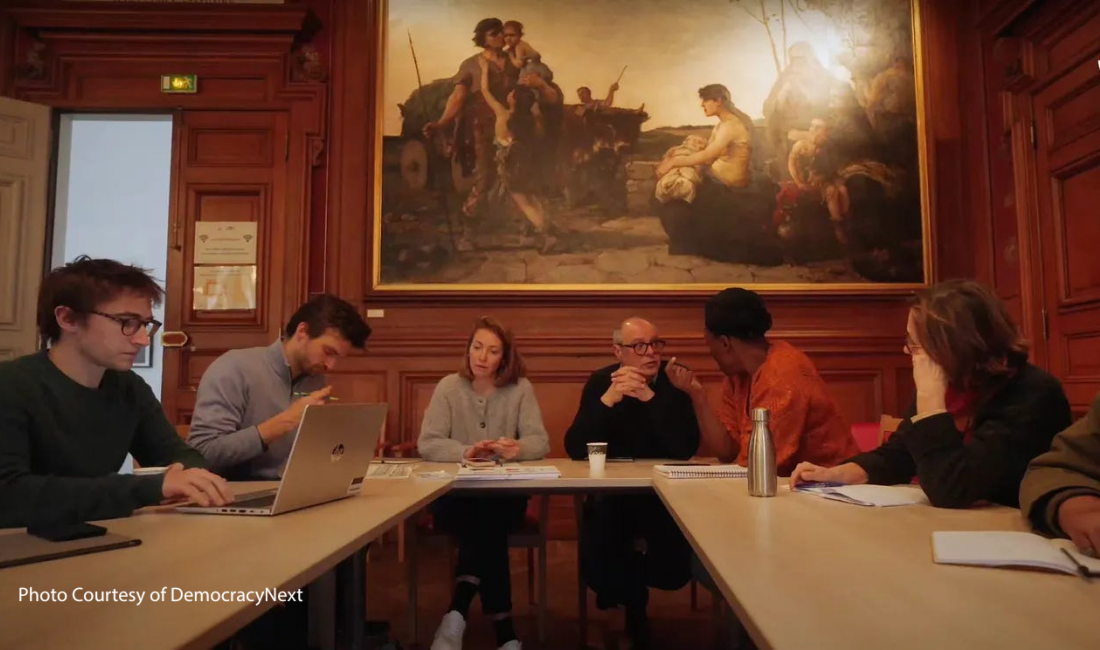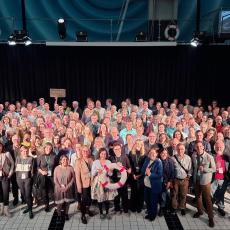Closing the gap between citizens’ deliberation and binding action.
This was originally published at Noema Magazine.
The rigid polarization that has gripped our societies and eroded trust in each other and in governing institutions feeds the appeal of authoritarian strongmen. Poised as tribunes of the people, they promise to lay down the law (rather than be constrained by it) and put the house in order not by bridging divides, but by targeting scapegoats and persecuting political adversaries who don’t conform to their ideological and cultural worldview.
The alternative to this course of illiberal democracy is the exact opposite: engaging citizens directly in governance through non-partisan platforms that encourage and enable deliberation, negotiation and compromise, to reach consensus across divides. Even as politics is tilting the other way at the national level, this approach of participation without populism is gaining traction from the bottom up.
The embryonic forms of this next step in democratic innovation, such as citizens’ assemblies or virtual platforms for bringing the public together and listening at scale, have so far been mostly advisory to the powers-that-be, with no guarantee that citizen input will have a binding impact on legislation or policy formation. That is beginning to change.
As I have written recently in Noema, the newly established online platform, Engaged California, takes a step closer to government “with” the people instead of just “for” the people, as Taiwan’s former Digital Minister Audrey Tang puts it. It is a three-way tool that enables policymakers and administrators to listen at scale to average citizens outside of election cycles and then obliges them to be responsive to the input they proactively solicited. It invites citizens to voice their concerns and proposals directly on an ongoing basis, and it is a platform for Californians from all walks of life to interact with each other to find common ground.
Recently, the Paris Citizens’ Assembly — a permanent body institutionalized in 2021 as part of the city’s governing apparatus — pioneered a new way to work closely with the government so that citizens’ voices are not only heard but heeded. On a rotating basis, it brings together 100 residents of Paris, drawn by lot, to meet for one year in working groups facilitated by expert advice, deliberate policy choices on pressing issues, and make recommendations to the elected council.
The 2023-2024 session of the assembly, which focused on homelessness and greening city streets, saw citizens, politicians from different factions and civil servants working together to draft a so-called “Citizen Bill” that was, for the first time, passed into legislation by the city council.
Claudia Chwalisz, who heads DemocracyNext, has spelled out the key elements of this innovative process that make it a model for others elsewhere:
- “Implementation should be considered from the start, not as an afterthought. The format of the final recommendations, the process for final approval, and the time needed to ensure this part of the process does not get neglected need to be considered in the early design stages of the assembly.
- Dedicated time and resources for transforming recommendations into legislation are also crucial for successful implementation. Bringing citizens, politicians, and civil servants together in the final stages can help bridge the gap between recommendations and action. While it has been more typical for citizens’ assemblies to draft recommendations that they then hand onward to elected officials and civil servants, who review them and then respond to the citizens’ assembly, the Parisian model demonstrates another way.
- Collaborative workshops where consensus amongst the triad of actors is needed adds more time to the process, but ensures that there is a high level of consensus for the final output, and reduces the time that would have been needed for officials to review and respond to the citizens’ assembly’s recommendations.
- Formal institutional integration of citizens’ assemblies through legal measures can help ensure their recommendations are taken seriously and ensures the assembly’s continuity regardless of shifts in government. The citizens’ assembly has become a part of Paris’s democratic architecture, as have other permanent citizens’ assemblies elsewhere. While one-off assemblies typically depend on political will at a moment in time and risk becoming politicized — i.e. in being associated with the party that initially launched the first one — an institutionalized citizens’ assembly anchored in policy and political decision-making helps to set the foundation for a new institution that can endure.
- It is also important that there is regular engagement with all political parties and stakeholders throughout the process. This helps build cross-partisan support for final recommendations, as well as more sustainable support for the enduring nature of the permanent citizens assembly.”
Citizens are not politicians. Mostly, they are not activists or policy wonks. They are busy people with lives, families and work competing for their attention. If they are being asked to take the time and commitment to participate in the governance of their communities, it must be worth their while.
If deeper citizen engagement in governance is to be a serious alternative to ineffectual representation or handing over power to strongmen who promise to fix everything, the process must produce results that matter. Otherwise, participation will be regarded as a performative ploy that makes no difference, fostering an even more cynical and resigned body politic that is the most fertile ground for the designs of demagogues or despots, large and small.




